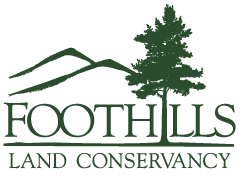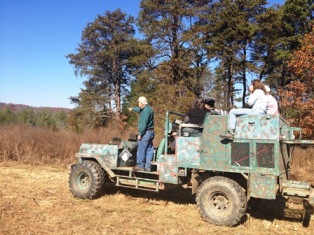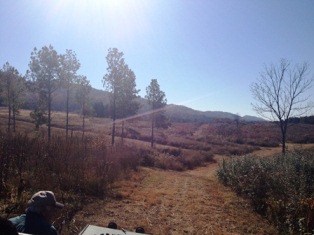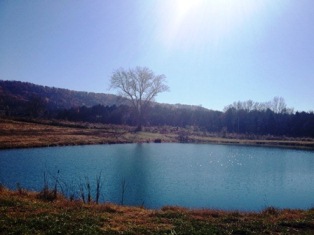Tour of Roane County Conservation Easement
This past fall FLC took a few employees with Strata-G, an environmental and consulting company in Knoxville, on a tour to one of our many remarkable conservation easement properties. With 106 of these partnerships covering 21 counties deciding which one to tour can be difficult! We decided to highlight Hartman’s property in Roane County and what a tour it was. Many thanks Dick Conley and the all- terrain vehicle, known as Monster Truck, for the transportation and the wind in our hair! (Periodically, FLC does provide tours like this one to groups or individuals, so please contact us with any interest at 865-681-8326 or info@foothillsland.org.)
Back in 2008 Mr. Gene Hartman, and his wife Becky, partnered with FLC on a conservation easement covering 920 acres of their farm in Roane County. Mr. Hartman is an ongoing Foothills supporter and his company, Duo Fast of Knoxville, has been an annual sponsor of FLC’s Celebration for many years. Several times a year, Mr. Hartman offers up his property for various conservation fundraisers and for use by disadvantaged youth, providing them with camping, fishing and other hunting activities.
FLC Board Member, Dick Conley, is the Land Manager for Hartman’s farm and provided the tour. He kicked things off with an aerial photo and brief history of the property. FLC’s Land Director, Meredith Clebsch, explained the data gathering and photo collecting that goes into the annual monitoring of these easements. Mr. Conley spent 39 years with TWRA as a wildlife habitat biologist, his specific areas of expertise is in restoring native warm season grasses and soil building legumes. A major interest of Conley’s is also helping to develop and monitor quail habitat.
Prior to the property’s current use as a commercial hunting preserve, it once housed a cattle farm, dairy operation and pasture lands. Close to 700 of the acres are in open fields with 300 in woodlands. Since the early 90’s Mr. Conley as helped to create a wildlife and native grass oasis amid neighboring cow pastures. Here are just a few of the projects that he has worked on over the years and in recent months:
Native warm season grasses were converted from fields of fescue, sericea lespedeza, and bermudagrass to grasses like big bluestem, little bluestem and indiangrass. Since 1999, 400 acres have been converted to warm season grasses.
Planting native grasses assist in providing habitat needed for wildlife . The root systems of these grasses aids in soil structure and water infiltration. Mr. Conley is always exploring what grass works best with the conditions on the property and he has seen an increase in wildlife species, like quail and rabbits, as a result of the plantings.
Controlled burns are conducted on half of the grass fields annually in a checkerboard type pattern. This ensures that there is always food and habitat for wildlife on the property.
Conley has removed hedgerows that contained privet and replaced them with wildlife loving shrubs such as American beautyberry, hazelnut and persimmon trees.
A few years ago 50 acres of the property were planted in switchgrass, primarily as part of UT’s biofuel switchgrass program. This contract has expired so plans are in the works to manage the current fields from ‘maximum yield’ to ‘wildlife benefit’, reducing the stand density to about 1 plant per 6 square feet.
There are 13 man-made ponds on the property that are spring fed. They are designed for the purpose of benefiting fish and wildlife. 2 waterfowl areas have been created with the planting of several grains such as corn, Japanese millet and grain sorghum.
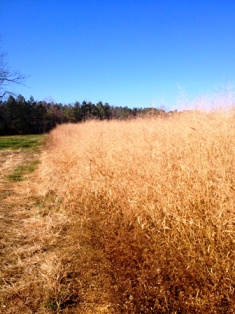
Quail habitat is an indicator of a large, diverse habitat that benefits many other species like song birds and butterflies. Quail require 4 different habitats within a 40 acre area brooding/nesting, escape, feeding, and cover. Outside temperature humidity levels also need to be between 20-30% when the hen sits on a clutch of eggs or the heat kills the eggs. Predators such as possums, skunks and raccoon are also a constant threat to the vulnerable quail eggs.
Did you know Dick Conley is also a Consultant Wildlife Habitat Biologist for Seven Islands Wildlife Refuge In the coming weeks,FLC will also post entries about current projects at Seven Islands by Dick Conley, the folks at TWRA and the Refuge’s Land Director, Nora Hassell. Stay tuned
